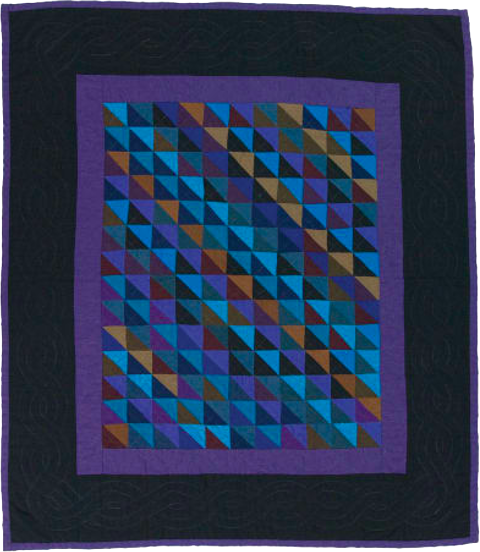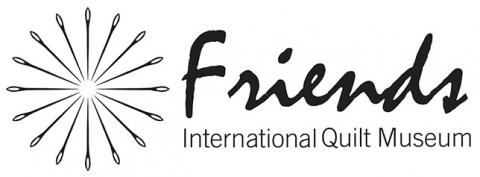
Black at Work: The Color Black in Quilts from the Collection
Black at Work: The Color Black in Quilts from the Collection

Black at Work examines how quiltmakers represented in the International Quilt Museum collection have utilized the color black as a visual or conceptual element in their textiles. It positions black as a serious and active representational tool with the power to change or enhance the way we see, perceive, and understand the world around us.
Whether black is used to generate contrast, to create borders, or to render illusions of dimensionality, it is essential to our experience of objects and space. In addition to analyzing how black engages the eye, this exhibition asks viewers to reflect on black as a concept that shapes social thoughts and categorizations. Within popular culture, black is symbolic of sophistication, darkness, mystery, and evil. Black can unify a group, as in “black tie affair”, or can segregate as a marker of racial difference.
In its varied presences, black invites a meditation on the complexities of our visual, psychological, and intellectual world. Concerned with more than just the appearance of the color, Black at Work asks, what does black do?
Black at Work: Engaging Youth through Textiles and Artmaking at the International Quilt Museum
International Quilt Museum guest curators Sadé Ayorinde and Chadric Devin will join Carolyn Ducey, IQM Ardis B. James Curator of Collections, to discuss a community project between the museum and the Arts & Humanities focus program in Lincoln, Nebraska. Using their exhibition Black at Work: The Color Black in Quilts from the Collection, Sadé and Chadric engaged high school students in conversations about the color black and its function as a visual and conceptual element in art. In response to the show, students were encouraged to consider and use black in work of their own. Visit the gallery to view the students work!
Event Date
Tuesday, November 22, 2022 to Saturday, March 25, 2023















